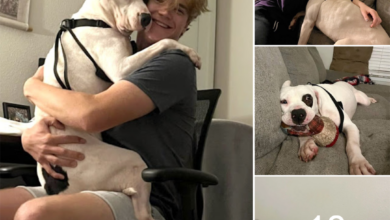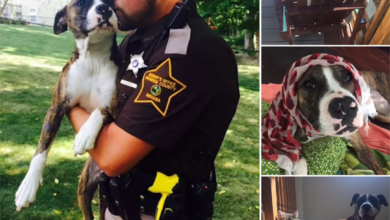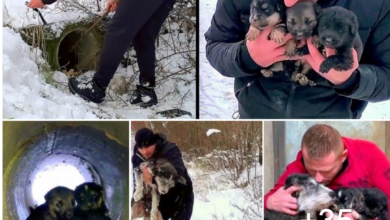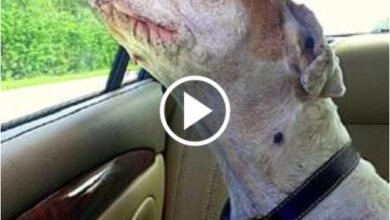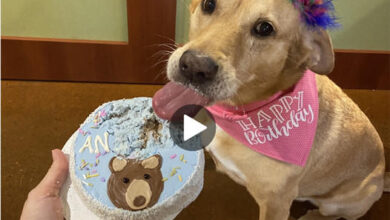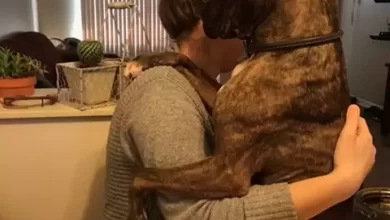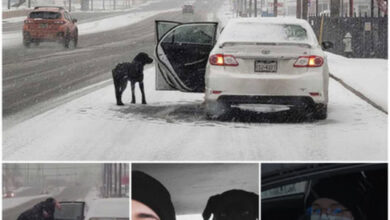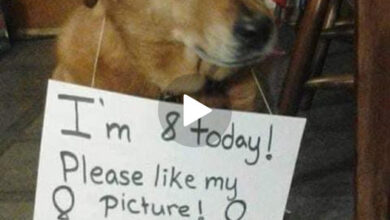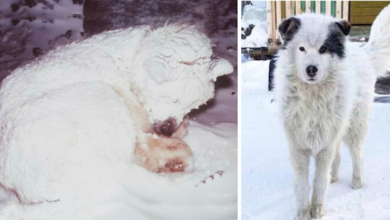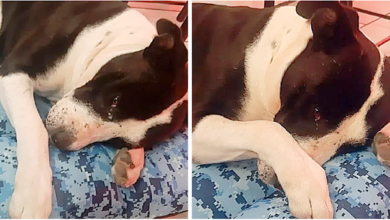Dog Separation Anxiety: Why it happens and How to fix it

You love your furry friend, but every time you leave the house, they seem to go into a frenzy. Barking, whining, and destructive behavior are all symptoms of separation anxiety in dogs. But why do some dogs experience this intense distress when left alone? Is it something you did wrong as an owner or is there a deeper underlying cause?
While it’s easy to assume that separation anxiety is solely due to a lack of training or poor behavior management, research suggests that genetics and past experiences may also play a significant role.
In this article, we’ll explore the various factors that contribute to separation anxiety in dogs and offer practical tips for helping your pup cope with this challenging condition.
Definition and Symptoms of Separation Anxiety in Dogs
You might notice that your furry friend becomes extremely anxious and exhibits destructive behavior, such as excessive barking or chewing on furniture, when you’re not around – these are the telltale signs of separation anxiety in dogs.
Separation anxiety is a common behavioral problem among dogs, affecting up to 20% of the canine population. It occurs when dogs become overly attached to their owners and have difficulty coping with being left alone.
There are several causes of separation anxiety in dogs, including genetics, lack of socialization, traumatic experiences, and changes in routine or living environment. Certain breeds are more prone to separation anxiety than others, such as Cocker Spaniels and Labrador Retrievers.
Treatment for separation anxiety may involve behavior modification techniques like desensitization and counterconditioning, as well as medication prescribed by a veterinarian.
Genetics also play a role in the development of separation anxiety in dogs. Research has shown that some breeds have a higher likelihood of developing this condition due to genetic predisposition. However, it’s important to note that genetics alone don’t cause separation anxiety – environmental factors also play a significant role.
Understanding the underlying causes and implementing appropriate treatment can help alleviate symptoms and improve quality of life for both you and your furry friend.
Genetics and Separation Anxiety
As a dog parent, it’s easy to assume that your furry friend inherited their clinginess from you, but the truth is that genetics play a significant role in shaping their behavior patterns and separation-related challenges.
Inheritance patterns are complex, and scientists have yet to identify specific genes responsible for separation anxiety. However, certain breeds are more susceptible to developing this condition than others. For example, Labrador Retrievers and German Shepherds tend to be more prone to separation anxiety than other breeds.
It’s not just breed susceptibility that influences whether a dog will develop separation anxiety or not. A dog’s upbringing can also play a role in how they cope with being away from their owner.
Puppies who were separated too soon from their mother or littermates may struggle with socialization and attachment issues later on in life. Similarly, dogs who experience traumatic events like abuse or neglect may be more likely to develop separation anxiety as adults.
While genetics and past experiences can contribute to a dog’s likelihood of developing separation anxiety, it’s important to remember that every dog is different. Some dogs may be perfectly content spending hours alone while others may struggle with even brief periods of isolation.
As we explore past experiences and separation anxiety in the next section, keep in mind that there’s no one-size-fits-all approach when it comes to helping dogs overcome this challenging condition.
Past Experiences and Separation Anxiety
Past experiences can shape a dog’s behavior when left alone, influencing how they cope with being away from their owner. Early trauma such as neglect, abuse, or sudden changes in routine can affect a dog’s sense of security and attachment.
For instance, dogs that have been rehomed multiple times may have difficulty developing trust and strong bonds with their owners. Attachment theory suggests that the way a dog attaches to their primary caregiver impacts how they react to separation.
Dogs that are securely attached tend to feel comfortable being alone for short periods while those who are insecurely attached may experience more distress when separated from their owner. Insecure attachment is often linked with inconsistent caregiving during early development.
The effects of rehoming on separation anxiety are also well documented. Studies show that dogs who were adopted from shelters or rescue groups are at a higher risk for developing separation anxiety compared to those who come from stable homes.
This could be due to the stress of adapting to new surroundings and the loss of familiar people and routines. As you move on to learn about lack of socialization and separation anxiety, it’s important to keep in mind that past experiences play an important role in shaping a dog’s behavior when left alone.
Understanding your pet’s history can help you provide them with the support they need to feel secure and comfortable in your absence.
Lack of Socialization and Separation Anxiety
Growing up without exposure to different people, animals, and environments can lead to a lack of socialization in dogs. This lack of socialization may contribute to their struggles with being left alone and feeling comfortable in new situations. Socialization benefits dogs in many ways, such as improving behavior, reducing stress levels, increasing adaptability, and boosting confidence.
To socialize your dog, slowly and gradually introduce them to different stimuli, including other dogs, people of different ages and genders, unfamiliar objects, sounds, smells, and environments. Use positive reinforcement, such as treats or verbal praise, to reward good behavior during the process.
Understanding the importance of socialization for your dog’s overall well-being can help prevent separation anxiety from developing or becoming worse. In the next section, we will discuss specific strategies to help your dog cope with separation anxiety.
How to Help Your Dog Cope with Separation Anxiety
If your dog suffers from separation anxiety, there are a few things you can do to help them cope.
Desensitization and counterconditioning involve gradually exposing your dog to being alone for longer periods of time while also creating positive associations with that experience.
Providing a safe and comfortable environment can also help ease their anxiety.
If these methods don’t work, seeking professional help from a veterinarian or animal behaviorist may be necessary to develop a personalized treatment plan for your furry friend.
Desensitization and Counterconditioning
Desensitization and counterconditioning can be effective methods for reducing a dog’s separation anxiety. They work by gradually exposing the dog to being alone and pairing it with positive experiences. Sudden separation can cause increased anxiety and negative associations with being alone, so gradual exposure is key.
Training techniques such as leaving for short periods of time and gradually increasing the duration can help the dog build confidence in their ability to cope with being alone. Positive reinforcement is also important in this process. Provide your dog with treats or toys that they enjoy when you leave, so they associate your departure with something positive.
You can also try leaving calming music or a familiar scent that your dog associates with relaxation. These behavior modification techniques can take time and patience, but over time, your dog may learn to tolerate longer periods of alone time without experiencing extreme distress.
To provide a safe and comfortable environment for your furry friend, there are other steps you can take beyond desensitization and counterconditioning. Ensure that your dog has access to water, food, shelter, toys, and a comfortable place to rest while you’re away. This will reduce any additional stressors that could contribute to their anxiety.
Providing a Safe and Comfortable Environment
Ensuring your furry friend has access to plenty of resources like water, shelter, and toys can create a comfortable environment that helps reduce stress. Creating routines is also important because it provides a sense of stability and predictability for your dog. Dogs thrive on routine and knowing what to expect can help ease anxiety.
Providing distractions is another way to make your dog feel more comfortable when they are alone. This could be anything from providing puzzle toys filled with treats, to leaving the radio or TV on for background noise. Giving them something to focus on other than their anxiety can help keep them occupied and calm.
By creating a safe and comfortable environment for your furry friend, you may be able to alleviate some of their separation anxiety symptoms. However, if these methods don’t work, seeking professional help may be necessary.
Seeking Professional Help
Sometimes, despite our best efforts, our furry friends may still struggle with separation anxiety and it’s important to seek professional help. Interestingly, a study found that up to 50% of dogs experience some form of anxiety during their lifetime.
While providing a safe and comfortable environment is essential in reducing stress levels, seeking professional help can also be beneficial in managing your dog’s separation anxiety. One option for treating separation anxiety is medication prescribed by a veterinarian. Medications such as anti-anxiety drugs or antidepressants can help reduce the severity of symptoms and make training more effective. However, medication should only be used as part of a comprehensive treatment plan that includes behavior modification techniques and environmental changes.
Another alternative therapy is desensitization training which involves gradually exposing your dog to being alone for longer periods of time while rewarding calm behavior. Seeking the guidance of an experienced trainer or certified animal behaviorist can also provide valuable insight into addressing your dog’s specific needs and behaviors.
It’s important to remember that every dog is unique and what works for one may not work for another. However, taking steps towards finding the right treatment plan through seeking professional help can greatly improve your dog’s quality of life and alleviate the stress associated with separation anxiety.
Now let’s explore how you can prevent separation anxiety in dogs before it becomes an issue.
Preventing Separation Anxiety in Dogs
To avoid separation anxiety in dogs, it’s important to establish a routine and gradually get them used to being alone. One way to do this is by starting with short periods of separation and gradually increasing the time as your dog becomes more comfortable. Another technique is crate training, which can help create a safe space for your dog when you’re not home.
Here are three tips for preventing separation anxiety in dogs:
- Provide plenty of exercise and mental stimulation before leaving. A tired dog is less likely to become anxious or destructive.
- Leave your dog with something comforting, like a favorite toy or blanket. This can help ease their stress while you’re away.
- Avoid making a big deal out of departures and arrivals. When leaving, simply say goodbye and leave without excessive fuss. When returning, calmly greet your dog after they have settled down.
By incorporating these techniques into your daily routine, you can help prevent separation anxiety in your furry friend.
Remember that every dog is different and may require individualized training techniques or professional help if necessary. With patience and consistency, however, most dogs can learn to be comfortable spending time alone.
Conclusion
In conclusion, separation anxiety in dogs can be caused by a variety of factors, including genetics, past experiences, and lack of socialization. It’s important to recognize the symptoms of separation anxiety in your dog and address them as soon as possible. This may include seeking professional help or making changes in your dog’s routine.
While there’s no guaranteed way to prevent separation anxiety in dogs, there are steps you can take to minimize the risk. These include gradually acclimating your dog to being alone, providing plenty of mental and physical stimulation when you’re home, and ensuring that your dog has a safe and comfortable space to retreat to when needed.
With patience and persistence, it’s possible to help your dog overcome their separation anxiety and lead a happy, healthy life. By understanding the root causes of this condition and taking proactive steps to address it, you can strengthen the bond between you and your furry friend while promoting their overall well-being.
Read more:
